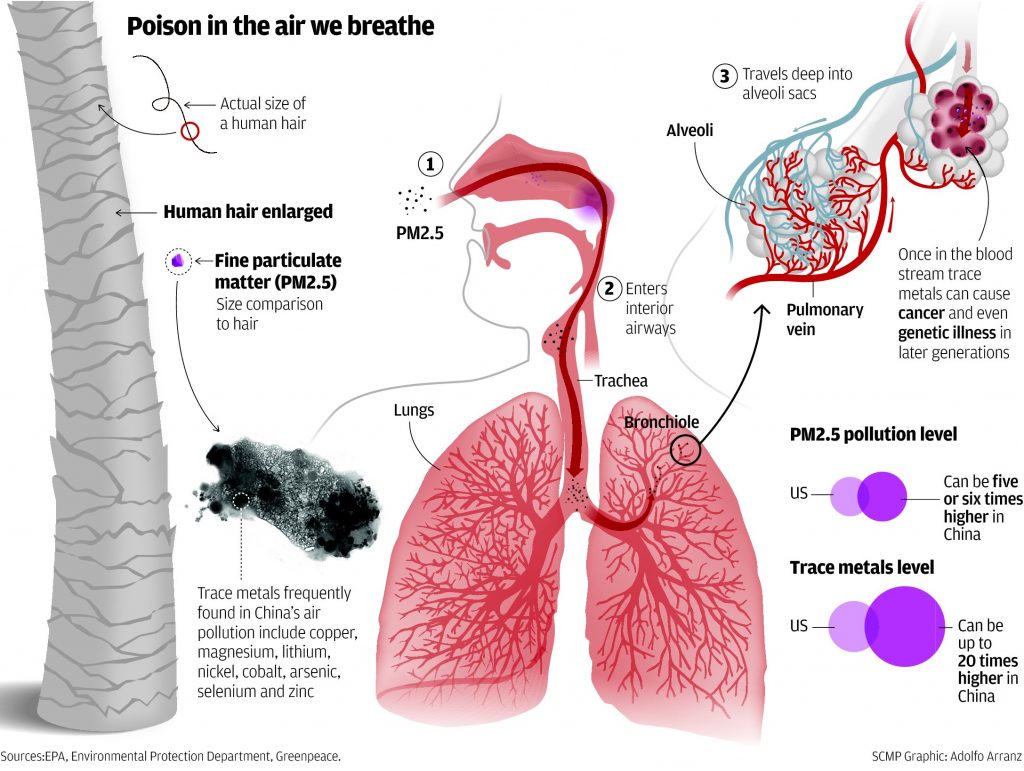Particulate Matter 2.5
PM or Particulate matter is generally a mixture of soiled particles and water droplets present in the air. It includes aerosols, smoke, fumes, dust, ash, and pollen. Particle matter 2.5 is a pollutant particle which is so fine that it is not visible to the naked eye. The Diameter of this particle matter is 2.5 which is literally 30 times smaller than one hair strand. PM2.5 is tiny particles in the air that reduce visibility and cause the air to appear hazy when levels are elevated. Outdoor PM2.5 levels are most likely to be elevated on days with little or no wind or air mixing. The term fine particles, or particulate matter 2.5 (PM2.5), refers to tiny particles or droplets in the air that are two and one-half microns or less in width.
What sources cause PM 2.5 in your area?
PM 2.5 is mostly caused by humans than natural sources. Things like industrial emissions can also be important, as can the use of non-smokeless fuels for heating and other domestic sources of smoke such as bonfires. There are also caused by motor vehicles, power generations, wood stoves and agricultural burning. These are more profoundly the primary sources of air pollution. There are some secondary sources also causing the level of PM2.5 in the area such as the mixing of gases such as Sulphur dioxide (SO2) and nitrogen oxides (NOx: nitric oxide, NO plus nitrogen dioxide, NO2); these are called secondary particles.

Health Effects caused by PM 2.5
Inhaling of PM2.5 is extremely dangerous because it is more toxic and travels deeper into the body and its procurement is generally absorbed by the blood. This pollutant has also been an entity to be linked with causing Lung cancer and another kind of cancers. This pollutant causes airway irritability, respiratory issue and damage to lung tissues. People with asthma, cardiovascular or lung disease, as well as children and elderly people, are considered to be the most sensitive to the effects of fine particulate matter. There are many other serious health problems that are caused by inhaling of PM 2.5 such as different cardiovascular diseases, bronchitis and ultimately cause of premature deaths.
Ways to reduce exposure to PM2.5
There are measures to check the AQI i.e. the Air Quality Index of the area by the use of monitors to check the level of pollution that is being caused in the air around you. If the level of air quality is bad, there can be using of measures such as air purifiers that can help in balancing the level of pollution making the air cleaner and reducing the amounts of pollutants from the air.
This post is also available in:
![]() Global
Global ![]() IND English
IND English ![]() UK English
UK English ![]() US English
US English